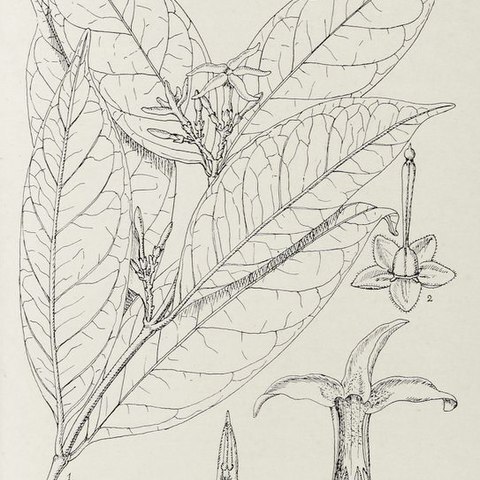Corolla hypocrateriform; tube ± cylindrical, slightly wider at the middle, glabrous on outer surface except for faint alternipetalous lines of puberulence, ± glabrous within except for a circle of long stiff downwards-pointing hairs below the level of stamen-insertion; corolla lobes 5, contorted, overlapping to the right, indumentum variable.
Stamens 5, sessile, inserted at about the middle of the corolla tube and with their tips reaching to the mouth of the tube; anthers conniving in a cone round the gynoecium, polliniferous in upper part only, joined to the clavuncle by a retinacle; dorsal surface of anthers often pubescent.
Ovary of 2 free multiovulate carpels pubescent at apex; style glabrous, gradually dilated towards the clavuncle, contracted and then widened into the capitate stigma.
Leaves opposite, with a pair of triangular stipules sometimes joined into a single intrapetiolar scale, without acarodomatia or petiolar glands.
Calyx lobes imbricate, free to base, each overlapped margin with one or a pair of delicate scales inside at the base.
Seeds linear-compressed with an apical coma; endosperm absent.
Scandent shrubs and lianes with milky latex.
Flowers borne in terminal umbellate cymes.
Fruit of 2 follicular mericarps.
Spines and tendrils absent.
Receptacular disc absent.
